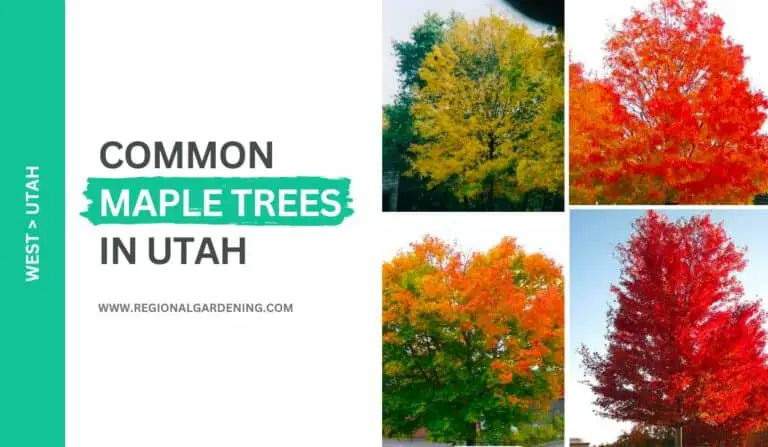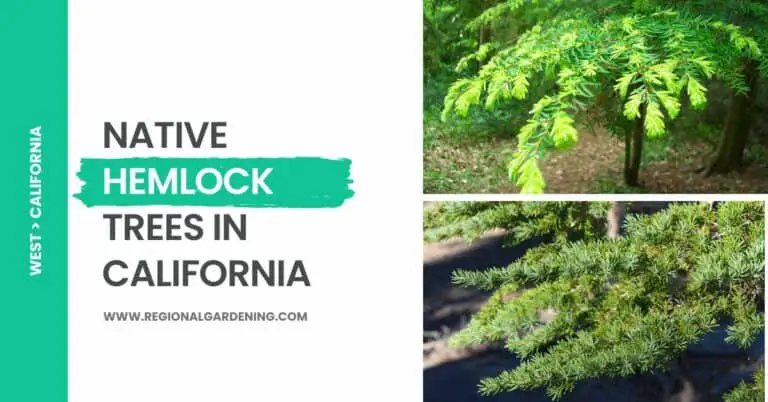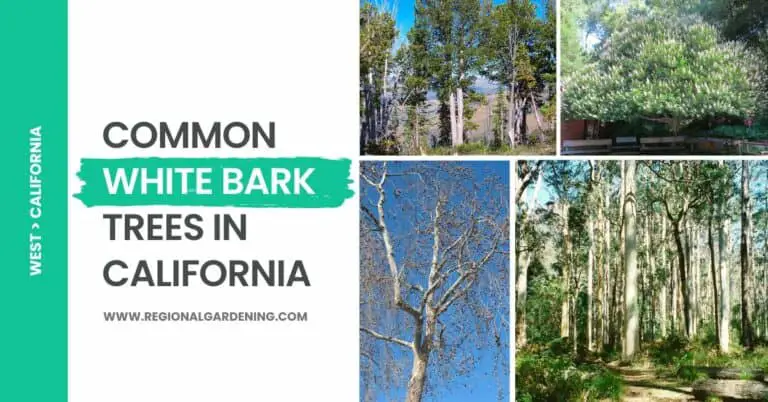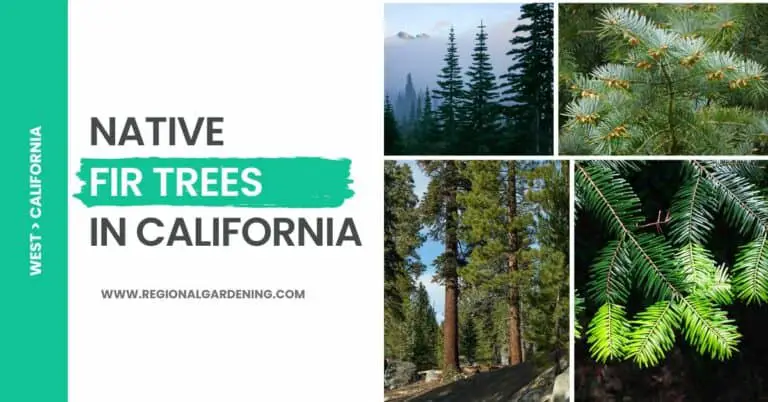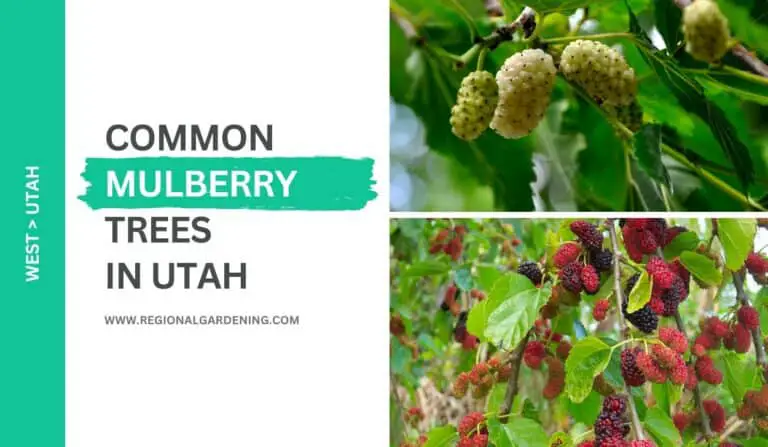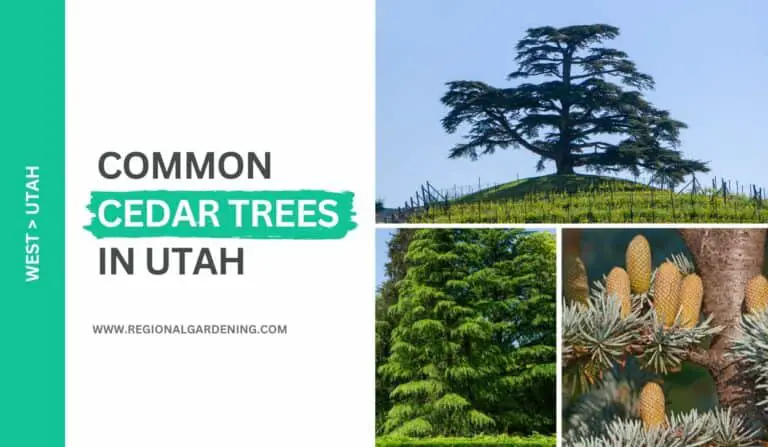Juniper Trees In California (5 Native Types You Must Know)
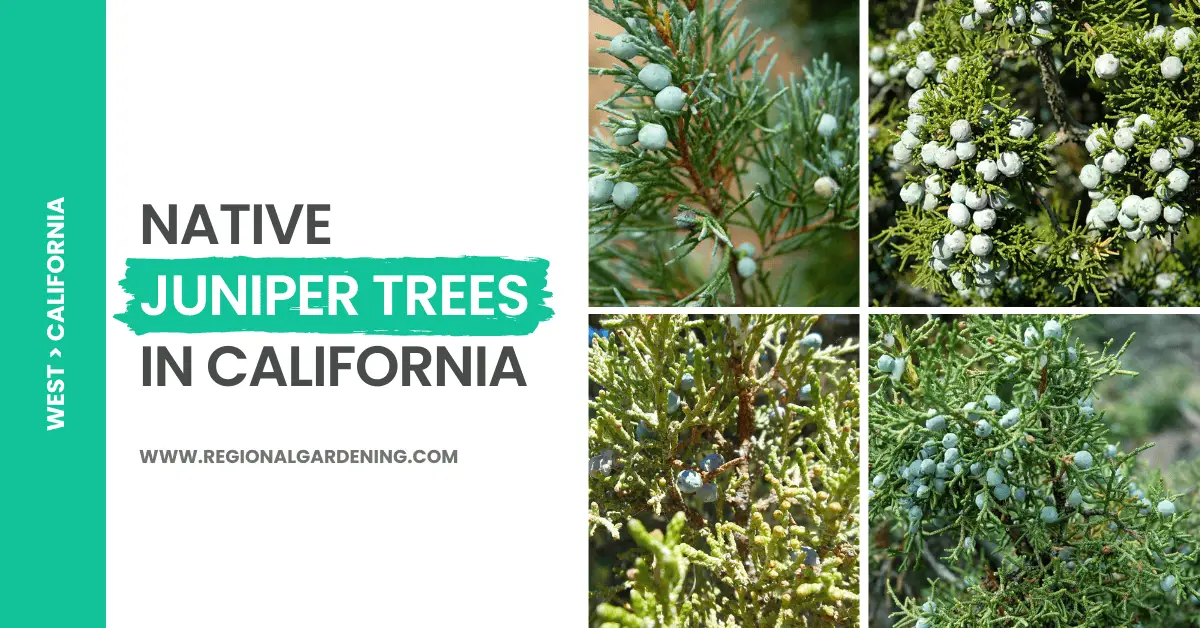
Even though California is known for giant redwood trees, there are a lot of other native trees that deserve attention. And, Juniper is one such variety.
The juniper genus contains 60 species, five of which are native to the state. In this article, we’ll be taking a closer look at these 5 native juniper trees in California along with their details including habitat, native range, identification, etc.
Let’s get started.
1. California Juniper
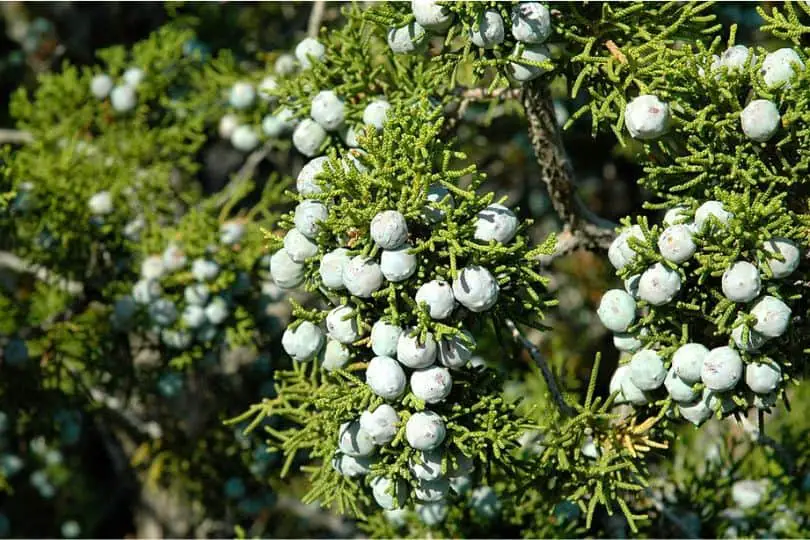
- Common Name: California Juniper
- Scientific Name: Juniperus californica
- Mature Height: 3.2-15ft
- Flowers: Cones
- Uses: Fuelwood, Christmas Trees, Fence Posts
The California juniper is an aggressive shrub that can reach heights of 20 feet and has a stiff, uneven crown shape. It can reach a height of 1 meter (3.2 feet) and a trunk circumference of 30 to 60 centimeters (1 to 2 feet) when it’s fully grown.
The leaves, which come in whorls of three, are scalelike and yellowish green. Young leaves have an awl shape. The berry-like cones have a spherical shape, measure 6-12 mm in diameter, and bloom briefly with a white tint.
Fluted stems contrast with the thin, fibrous, and ashy grey bark. The California Juniper grows in coniferous forests, arid scrublands, and chaparrals between 45 and 1,500 meters (150 and 5,000 feet) in elevation (5,000 feet).
It grows well in low-fertility, shallow, rocky soils with a coarse texture and the common companion plants include singleleaf pinyon and Desert yucca.
Even though California juniper seedlings need shade, mature trees of this species can’t live in it. Due to the tree’s papery bark, it burns quickly. It’s used to make fireplace logs, Christmas trees, and fence posts.
Also, birds and small mammals love sweet berries, thus it serves as both a food and shelter source. Bows and juniper berry cakes were crafted from wood by indigenous peoples.
2. Common Juniper
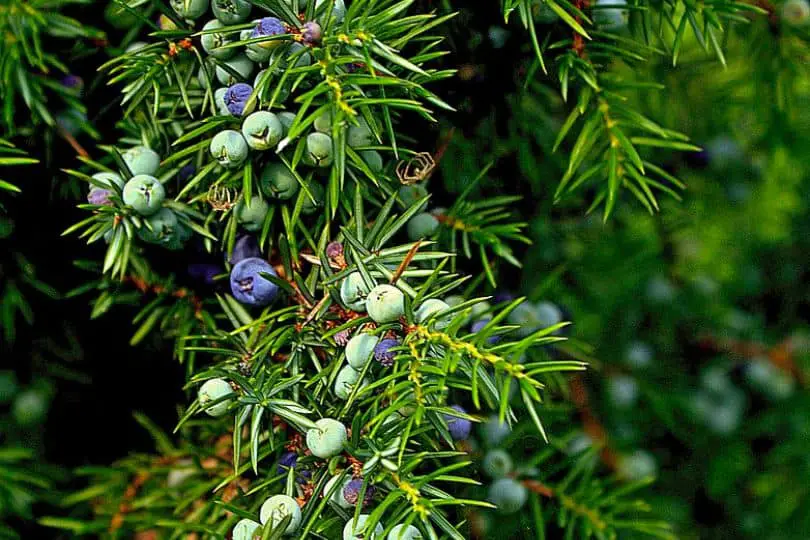
- Common Name: Common Juniper
- Scientific Name: Juniperus communis
- Mature Height: 3.3-46ft
- Flowers: Cones
- Uses: Ornamental, flavoring, medicine
The Common Juniper is a shrub that can vary in form from an erect tree to a waist-high shrub to a prostrate shrub. In California, it is often a low shrub that can grow up to one meter tall and one to two meters wide.
Its awl-shaped, whorled leaves are rigid, pointed, and capped with spines; their upper surfaces are marked by a large stomatal stripe. Crushed leaves give out an unpleasant odor and reveal a dark green, glossy, convex underside.
In California, the montane and subalpine coniferous woods are where you’re most likely to come across the Common Juniper, despite its widespread distribution in the Northern Hemisphere. It occurs seldom between 2,000 and 3,300 meters in the Sierra Nevada and Cascades.
It takes three years for the plant’s spherical, berry-like cones to mature, yet its luscious, sweet fruit is well worth the wait. The bark contains shallow furrows and thin, papery, reddish-brown scales.
At altitudes between 90 to 1,500 meters, it is most prevalent in the Jeffrey pine forests and chaparrals of Del Norte and Siskiyou counties.
Throughout history, the Common Juniper has been used for many things, such as incense, perfume, medicine, liniment, and flavoring for drinks. Urinary tract infections, gout, and other conditions may all benefit from eating its berries. Marinating meat and wild animals is another culinary usage for berries.
Most wildlife species avoid eating the leaves, but many birds and mammals love the berries. Its decorative qualities have led to the development of a wide variety of cultivars.
3. Western Juniper
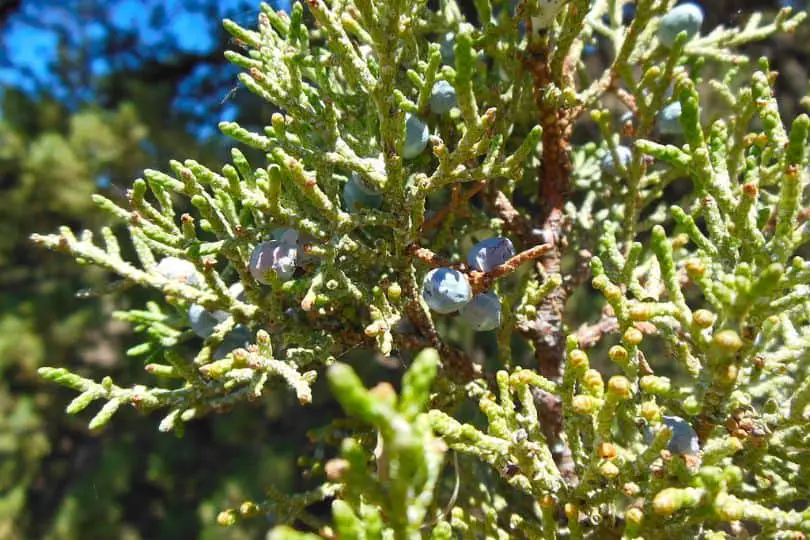
- Common Name: Western Juniper
- Scientific Name: Juniperus occidentalis var. Occidentalis
- Mature Height: 15-33ft
- Flowers: Cones
- Uses: Firewood, fence posts, novelty products
The Western Juniper is a short, erect tree that can grow up to 10 meters (33 feet) tall and 90 centimeters in diameter (3 feet).
It has a full, rounded crown and a long lifespan, with some trees living for centuries. In exposed, harsh environments, the tree may develop a shrubby growth habit. Its scalelike leaves range in color from greyish green to bluish green and are typically found in opposite pairs or whorls of three.
They have resinous glands and/or resin deposits in their pits, and the juvenile leaves are awl-like. It has spherical, berrylike cones that are 6-12 mm in diameter and bluish-black beneath an ephemeral whitish bloom.
The bark is brown, thin, and fibrous. The Western Juniper is found primarily in interior coniferous woodlands in eastern Washington, eastern Oregon, and northern California, at elevations ranging from 700 to 2300 meters (2300-7500 feet).
It is commonly found growing between sagebrush flats and pine forests, dominating open woodlands and strewn throughout big sagebrush and/or bitterbrush. It dislikes being in the shade and burns easily in the event of a fire.
Its wood is aromatic and similar to that of eastern red cedar, and it is used for firewood, fence posts, and a variety of novelty items.
Birds and rodents eat berry-like cones, which are an important winter food source. Deer, elk, and other small mammals enjoy foliage as well.
East of the Warner Mountains, it can cross-pollinate with Utah Juniper.
4. Mountain Juniper
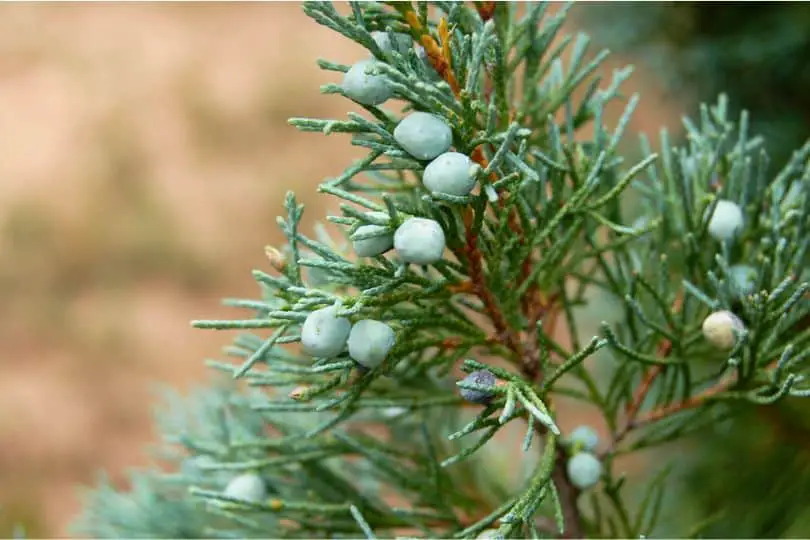
- Common Name: Mountain Juniper
- Scientific Name: Juniperus occidentalis var. Australis
- Mature Height: 15-50ft
- Flowers: Cones
- Uses: Ornamental
The Mountain Juniper is a short, upright tree that typically has many trunks and huge, rough branches. It has a diameter range of 30–90 centimeters (15–35 inches) and a height range of 4.5–15 meters (15–50 feet) (1 to 3 feet). The top of its head is rounded and plump.
In the mountainous and subalpine coniferous forests of California, western Nevada, and the northern Coast Ranges, this tree often grows with the Jeffrey Pine. It has scaly leaves that range in color from grey to blue-green and are arranged in whorls of three (sometimes opposite).
Young leaves have an awl shape. Cones range in size from 6 to 10 mm in diameter and have a round, berrylike shape. Below a fleeting whitish bloom, they are a deep bluish-black.
Mountain juniper bark is thin, and fibrous, and ranges in color from reddish brown to cinnamon brown. In addition to being very flammable, Mountain Juniper also has a low shade tolerance.
This plant is often found on exposed, windy granite slopes in the Sierra Nevada. Its twisted, tortured look and sparse, wind-whipped crown make it a welcome sight. Cones with their berrylike fruit within are a crucial winter food source for birds and rats.
5. Utah Juniper
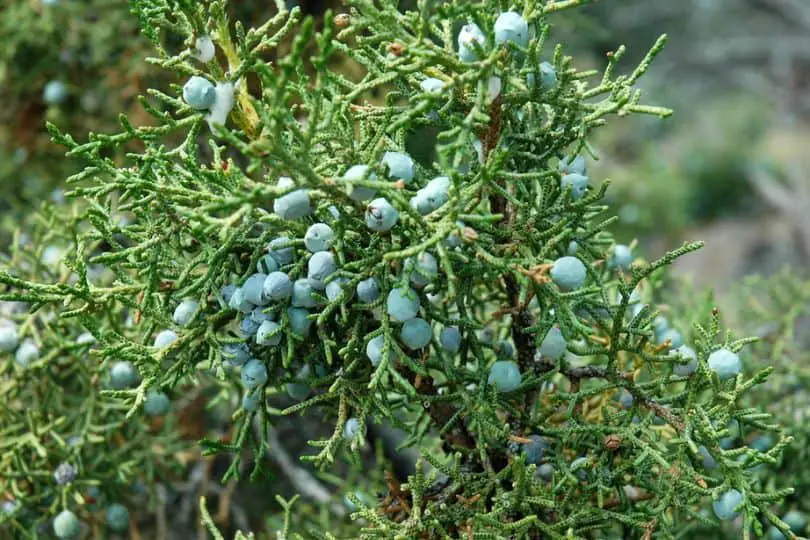
- Common Name: Utah Juniper
- Scientific Name: Juniperus osteosperma
- Mature Height: 15-30ft
- Flowers: Cones
- Uses: Firewood, fence posts, mine timbers, charcoal
The Utah juniper is typically a single-stemmed (though sometimes multi-stemmed) tree with a short trunk and broad, rough branches. It can grow to a height of 9 meters (30 feet) and a circumference of 30 centimeters (1.2 feet).
It has a rounded, complete crown (12 inches). Cones are berry-like and reddish brown, measuring 6-20 millimeters in diameter, and leaves have a yellow-green scale shape.
The bark is brownish-gray in color and has a papery texture. This species lives in the Great Basin, especially in the mountainous parts of southeastern California and the area where Nevada and California meet.
High altitudes (between 1,000 and 2,500 meters) and dry, shallow soils are ideal (3,200-8,400 feet). Great Basin pinyon-juniper forests are home to Utah juniper because of the species’ resistance to drought and inability to burn. Its timber is used for many different things, including building structures, fencing, mining, and charcoal.
Many different types of birds and mammals, especially tiny rodents in the desert, enjoy munching on juniper berries and foliage. It crosses with western juniper east of the Warner Mountains as well.
Similar Articles
- Native Pine Trees In California
- Native Cypress Trees In California
- Native Birch Trees In California
- Native Cedar Trees In California
- Native Maple Trees In California
- Native Oak Trees In California
- Native Spruce Trees In California
- Native Alder Trees In California
- Common White Bark Trees In California
- Native Hemlock Trees In California
- Native Fir Trees In California
- Native Manzanita Trees In California
- Native Ash Trees In California
- Common Purple Trees In California
Sources
The Regional Gardening team makes sure that the information in our articles is accurate by only using sources that are known to be trustworthy. Some of these sources are peer-reviewed journals from government agencies, well-known universities, and scientific research organizations.
- California Forests, University Of California
- California Native Plant Society
- Native Plants, California Department Of Fish & Wildlife
- California Natural Diversity Database


